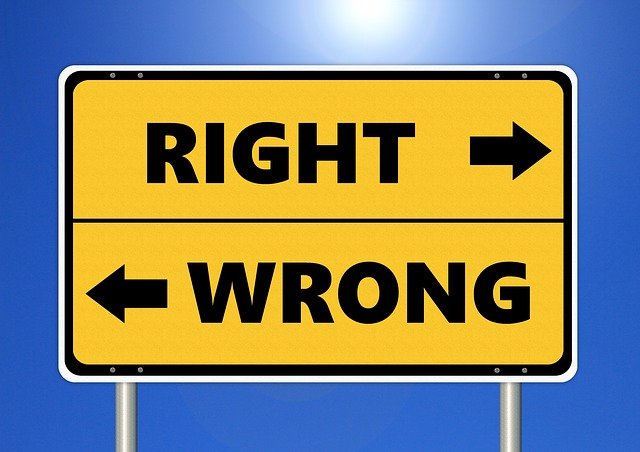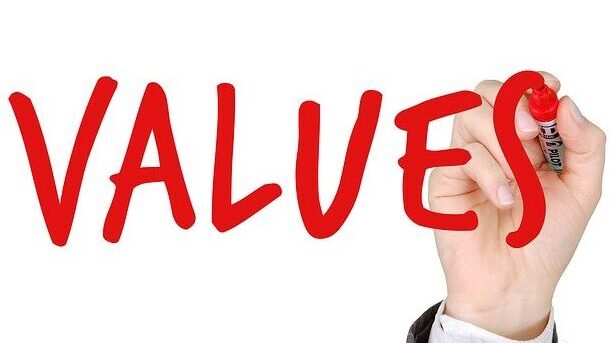Business ethics have featured in the news quite a bit recently: companies ignoring employment laws, legal loopholes being found to work around tax rules, environmental damage, political donations and conflicts of interests… the list goes on. Being deeply involved in major change initiatives, those working in business analysis will often find themselves presented with ethical decisions. Ethics in business analysis is a subject that comes up regularly in my conversations with other BAs, and it seems everyone has examples of poor practice or tough dilemmas they’ve encountered. Here in the UK, many BAs are members of IIBA or BCS – both of whom have their own codes of practice.
As individuals, we all have our own principles and “red lines”, and our work delivering change in organisations can put us in challenging moral situations. In this post, I’ll look some of the ways BAs can make sure we’re not compromising our own standards or facilitating unethical changes.

Know your own boundaries
Obviously, helping a company to break laws and regulations is not something we do, and I recommend that any BA asked to do so reports this to the relevant authorities. But what about scenarios where technically something is within the letter of the rules, if not in the spirit? Should we discourage “sharp practice” where this furthers the legitimate aims of the organisation?
- Should we rely on the fact customers don’t switch providers?
- Is it ok to bury key details in the small print of a customer letter?
- If a financial penalty costs less than strict adherence to a supplier agreement, what would you advise?
- Are we designing-out someone’s job because that’s less painful than the “performance management” route?
Whatever your view here, I think it’s important to consider your outlook before you actually find yourself in any particular dilemma. Also, think about how you would go about raising concerns should an ethically dubious situation occur. Is there someone you can discuss things with? How are they likely to react? How might you prepare for that conversation? Would you be a whistle-blower?

Think about what you know of the culture in the organisation (and in your team). What is tolerated? What’s happened in the past? This can help you identify where future challenges may emerge.
You could include ethics considerations into any Project Team Charter, getting the conversation started early and drawing out any risks or concerns people may have. This makes it clear from the outset that ethical practices are expected and will be encouraged.
Doing right by people
Treating people fairly and compassionately is fundamental, both in terms of how we work with people and in the likely outcomes and impacts of the changes we pursue. Understanding the effects of our changes on different groups of stakeholders is part of our bread-and-butter work, so we typically have a great understanding of likely impacts.
Business analysts are frequently engaged to undertake “efficiency” exercises, seeking ways to reduce costs and improve productivity. Development of new technology to automate tasks is a frequent business request. Headcount reduction may be an explicit goal, or at the least is likely to be an assumed benefit. The BA can find themselves in an uncomfortable position: working closely with staff to understand and improve processes while knowing that some of those very staff may be out of a job as a result. Redundancy is a huge deal for anyone, and can result in real distress for people.
For an empathetic business analyst, this can be tough to square with the recognition that controlling costs is an entirely legitimate aim for any business. For me, the key is to consider how we pursue the business goal, ensuring we are doing our utmost to treat people fairly and with respect.
Primarily, this means being honest with the people we work with. You may be privy to confidential information about the company’s strategic intent or future changes, and this can limit what you can tell your stakeholders. However, misleading them (even through deliberate omission or obfuscation) is a red line for me. Frank discussions with those driving the change can help avoid sticky situations down the line. Find out exactly what can be said, and agree an approach to any tough questions.
It is also important to look at whether changes are implemented in a fair way. When considering project plans, we can check that HR procedures, consultation with customers, notice to suppliers are all baked-in appropriately. Make sure vulnerable or unrepresented stakeholder groups are not excluded or unintentionally receive worse outcomes.
Aligning change initiatives with policies and values
Most larger companies will have a collection of policy statements about their environmental and social aims and ethics. When considering a business problem or opportunity, or exploring solutions, BAs should consider these statements and the extent to which they should guide and influence the decisions the business will make. If the organisation has a grand statement about sustainability, a BA can call out the mismatch if short-term, unsustainable solutions are being considered. If a corporate value on the website is to “put customers first”, we should examine whether this change actually does that.
I like to include information about policy alignment in any change proposals or business case documentation. This means that decision-makers are presented with a clear statement of the extent to which the change fits with the organisation’s stated intent. Any subsequent decisions are then at least made in full recognition of the facts.

Designing change practices that encourage ethical behaviours and outcomes
Change leaders and practitioners can foster a healthy environment for ethical thinking through the design of change processes.
In addition to some of the ideas above, this can include formalising decision-making or controls, creating templates that direct users to ensure the right things get considered, providing transparency, or creating escalation routes for when a team member has a concern.
Above all, make it clear that talking about ethics is healthy and that those that do so will be encouraged and supported.
Conclusion
Ethics in business analysis is a huge topic, and I’ve barely scratched the surface here. As business analysts, we work in liminal spaces – part of the organisation, but also looking at it from outside; at the boundary between the current and future states; between customer and supplier – and grey areas are inevitable. What you can be clear about are your own perspective and principles, and what you’ll do when these are at risk of compromise.
I’d love to hear your thoughts on the subject. Has your work taken you into difficult ethical territory? How do you manage situations where the right thing to do is unclear? Leave a comment below, or get in touch if you’d like a deeper chat!